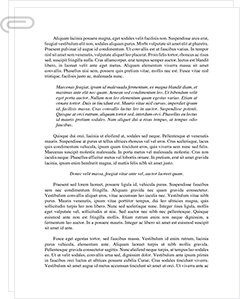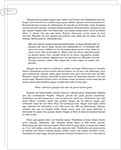 Study Document
Study Document
Patient Satisfaction and Design
Pages:7 (2415 words)
Sources:14
Document:#12586458
Inpatient Whiteboards
This study is a theoretical framework exploring whiteboard use preferences and recommendations for patient-centered care and communication through whiteboard use.
This study is a theoretical framework exploring whiteboard use, script-based communication, and hourly rounding to evaluate effectiveness of care associated with pain management and patient satisfaction.
The study utilizes a conceptual framework.
This article uses a conceptual framework that provides a literature review
Conceptual framework
Conceptual Framework
Conceptual Framework
A 3-week pilot involving multidisciplinary whiteboard use
The setting is Stanford University Medical Center
Sample characteristics (# of patients) Patients available for the pilot were 104 patients: 56 from inpatient units with use of whiteboards and 48 from inpatient units with no use of white boards.
internal medical residents were also surveyed.
Design: The study involved a semi-structured interview.
Setting: The interview took place in a pediatric urban academic hospital inpatient surgical service
Sample characteristics (# of patients) The number of people interviewed were 29 families.
Design: The researchers used a prospective, quasi-experimental pretest -- posttest design
Setting: Researchers used two units in a hospital situated in an academic health sciences center (southern U.S.)
Sample characteristics (# of patients) Medical personnel within the units were used for data collection.
Design: Review
Setting: Hospital
Sample characteristics (# of patients) No patients used, presentation type of article. Obstetric whiteboards implemented. This was a presentation that offered implementation, outcomes, and evaluation. No studies used.
Design: Data-collection Study using surveys
Setting: Pediatric emergency department
Sample characteristics (# of patients) Data collection came from two weeks of nursing call bell activation data. While no participants, 200 pre-and post opinion surveys served as the basis of the results of the study.
Design: Review of literature and replication and quasi-experimental study
Setting: No real setting
Sample characteristics (# of patients) N/R
Design: Evidence-based quality improvement project
design
Setting: Hospital
Sample characteristics (# of patients) 110 bed sample
Design: Systematic Review
Setting: Not Applicable
Sample characteristics (# of patients) Not Applicable
Design:
Setting: Medical Surgical Unit
Sample characteristics (# of patients) No real number of patients or patient bed determined
Design:
Setting: Lehigh Valley Health Network
Sample characteristics (# of patients) 125 non-nursing providers and 33 care givers
Design: No design as this is a presentation
Setting: Postpartum Stay
Sample characteristics (# of patients) 4 mother-baby units
Design: A microsystem assessment of two inpatient medical-surgical wards.
Setting: medical facility
Sample characteristics (# of patients) Not Applicable
Design: Action Research Design using qualitative information
Setting: Southern California Hospitals
Sample characteristics (# of patients) 11 hospitals
Design: Not Applicable
Setting: Not Applicable
Sample characteristics (# of patients) Not Applicable
The major variable was white board use and it was measured through patient satisfaction, communication, and estimated discharge date. The patients were the dependent variable and the white board use was the independent variable.
T-tests were performed along with one-way ANOVA.
The major variable was white board use and the patients were the dependent variable. While there was no control group, information from the interview was turned into quantitative data using descriptive stats.
The independent variables were whiteboard use, script-based communication, and hourly rounding. It was measured through patient satisfaction examined through effectiveness of pain management. No quantitative analysis was performed.
Researchers used the Press Ganey and the Hospital Consumer Assessment of Healthcare Providers and System (HCAHPS) surveys. No variables discussed.
The independent variable was hourly rounding with the dependent variables being call bell activations. Vendor-collected survey results consisted of the main form of data collection with one-way ANOVA interpretation.
The independent variable in this study was hourly rounding with dependent variables being fall prevention, patient satisfaction, and call light usage.
The independent variable was pain care toolkits with dependent variables being pain management and patient satisfaction. Through SWOT analysis and Chi-Square analysis, researcher analyzed data.
Independent variable was nursing rounds and dependent variables were patient satisfaction and reduction of patient falls.
Independent variable was nursing rounds and dependent variables was reduction of patient falls. Study used Hospital Consumer Assessment of Healthcare Providers and Systems domain scores to assess effectiveness of hourly rounds.
Independent variable is white boards and dependent variables are patient satisfaction and communication. Audit implementation included: Twelve templates: Medical/Surgical, Critical Care, Transitional Skilled Unit, Pediatrics, Labor and Delivery, Labor and Delivery Triage, NICU, Emergency Department, ED-17th Street, ED-Children's, Mom/Baby, and Perinatal.
Main variable is white board use and the dependent variables are postpartum units and patients in those units. Information was collected through surveys.
Main variable is personalized whiteboard use and dependent variable is patient satisfaction. Researcher used Press-Ganey scores for statistical analysis.
Main variable is hourly rounds and dependent variables were participants in the phone interview. Qualitative data was analyzed for themes.
No variables as this is an expert opinion article.
Using whiteboards led to patients knowing the name of their physician, objectives for admission, estimated discharge date, as well as improved satisfaction overall with hospital stay. The actual numbers were (0.0001, 0.0016, and 0.0242) respectively.
From the families interviewed, two-thirds of respondents reported the use of white board and over half were informed by staff (52%). Those that used whiteboards were six times more actively using it than those who used it as a visual reference. Other analysis pointed to 42% of that group in which parents wrote on the white board. From that 42%, 80% only had contact information.
Whiteboard use, and the other forms of communication elicited consistent and clear communication with patients' creative a positive effect in pain management and thus patient satisfaction.
No quantitative analysis was performed. Qualitative results suggest obstetric whiteboards improved communication.
Not enough quantitative analysis was performed. However, results suggest hourly rounding had no or minimal positive impact on call bell activation. Results show accidental call bell activation increased with introduction of hourly rounding.
Results suggest hourly rounding alone does not offer a decrease in call light usage, or increases patient satisfaction. It does help fall prevention, but not in a significant manner.
Pain care toolkits are beneficial to pain management and thus increased patient satisfaction. Quantitative results show P. value of
Sample Source(s) Used
References
Alaloul, F., Williams, K., Myers, J., Jones, K. D., & Logsdon, M. C. (2015). Impact of a Script-based Communication Intervention on Patient Satisfaction with Pain Management. Pain Management Nursing, 16(3), 321-327. doi:10.1016/j.pmn.2014.08.008
Brosey, L. A., & March, K. S. (2015). Effectiveness of Structured Hourly Nurse Rounding on Patient Satisfaction and Clinical Outcomes. Journal of Nursing Care Quality, 30(2), 153-159. doi:10.1097/ncq.086
Cholli, P., Meyer, E. C., David, M., Moonan, M., Mahoney, J., Hession-Laband, E., . . . Bell, S. K. (2016). Family Perspectives on Whiteboard Use and Recommendations for Improved Practices. Hospital Pediatrics, 6(7), 426-430. doi:10.1542/hpeds.2015-0182
Emerson, B. L., Chmura, K. B., & Walker, D. (2014). Hourly Rounding in the Pediatric Emergency Department: Patient and Family Safety and Satisfaction Rounds. The Journal of Emergency Medicine, 47(1), 99-104. doi:10.1016/j.jemermed.2013.11.098
Related Documents
 Study Document
Study Document
Patient Satisfaction in Quality of Managed Care
Patient Satisfaction in Quality of Managed Care Aspect to be compared Gender and Patient Satisfaction in Managed Care, etc. Stakeholder Perceptions of Quality in Managed Care Plans Two Steps to Enhance Managed Care Quality Author(s)/Date Emily Weisman, MS Martha Romans Jacobs Institute of Women's Health Washington, DC Carolyn M. Clancy, MD Paul L. Grimaldi, Ph.D. To determine what the differences are and what variables might affect women patients' perceptions of the quality of managed care To find out what attributes three different health care
 Study Document
Study Document
Patient Satisfaction and Communication
Patients in hospitals often complain of pain regardless of the diagnosis. Several activities in a patient's life contribute to pain. Some of the activities include amount of sleep, daily chores and quality of life (Alaloul, Williams, Myers, Jones, & Logdson, 2015). While health care expenses have increased significantly over the years, there have been great improvements in increasing both family and patient involvement in medical care. Hourly care is one
 Study Document
Study Document
Patient Satisfaction and Management
diagnoses, pain is a common complaint among inpatients. In the U.S. alone, approximately 100 million patients experience chronic pain (Alaloul et al., 2015). Pain negatively affects numerous aspects of an individual's life, such as sleep, quality of life, and physical functioning. Pain is also associated with negative psychological outcomes like depression, extended hospitalization, and a huge economic burden. In the U.S., for instance, pain imposes an estimated cost of
 Study Document
Study Document
Patient Satisfaction and Pain
setting, definition Sample/Setting Conclusions (Appraisal) Level of Evidence (Flagg, 2015) Implementing patient-focused healthcare within settings burdened by the combined challenges of scarce support systems, huge patient loads and constantly-growing patient care responsibilities, especially chronically ill patients A healthcare organization with nursing staff on twelve-hour schedules Characteristics: Number of patients individual nursing professionals have to cater to, which ranges between 3 and 5. Catheter care, blood extractions, surgical schedules planned, antibiotic drugs' presence in the hospital inventory,
 Study Document
Study Document
Patient Satisfaction and Nursing
size is an important step in the sample selection process. In Negarandeh, Bahabadi & Mamaghani's (2014) study, the procedure used to determine the sample size is clearly described. Following a pilot study, using the sample size formula, and based on the population of the hospital in which the trial was carried out, the authors estimated the sample size at 100 participants (50 participants in each group). Revealing how the
 Study Document
Study Document
Increasing Patient Satisfaction
You have been appointed to chair a hospital-wide committee to develop and implement a plan to improve patient satisfaction in your facility. Your Chief Nursing Officer has provided you a summary report indicating a steady decline in patient satisfaction over the previous six months. You will need to identify the various resources available for tracking patient satisfaction, establish a clear bench mark and design a specific plan of action for



